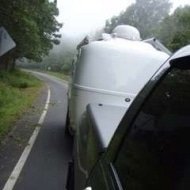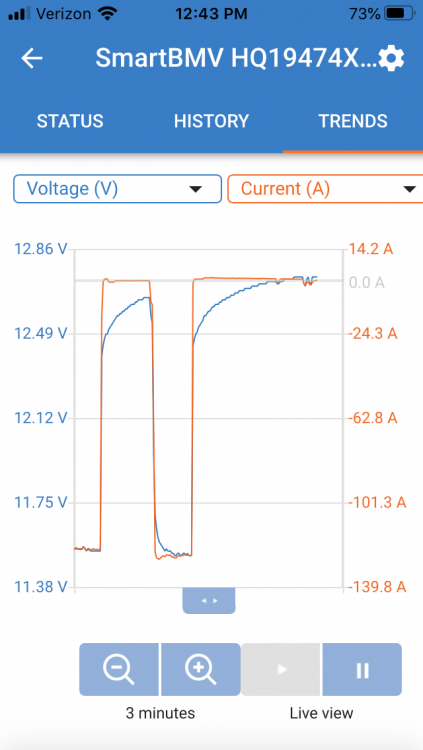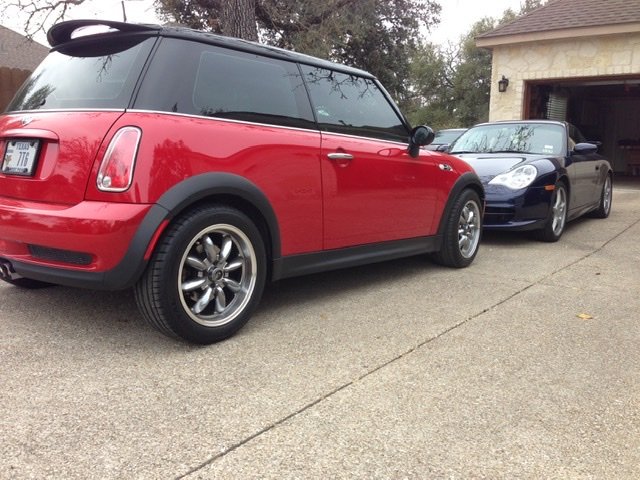Leaderboard
Popular Content
Showing content with the highest reputation on 07/21/2020 in all areas
-
After Paula and I ordered our 2019 LEII we both spent considerable time reviewing the forums for the tips, techniques, and trouble descriptions that folks have contributed. I remember some posts about having ready spares on hand, particularly on longer trips, and we had plans to do that so I purchased some ready spares, tools required and recommended, and additional materials to facilitate repairs. As it turns out, We are camping in Pittsburgh, NH today and for the next few days near the main source for the Connecticut River which runs between NH and VT through western Massachusetts, central Connecticut and onto the Long Island Sound. This is our first trip this far north in our home state of NH. We get to Ramblewood Cabins and Campground, find our site and proceeded to setup. We eventually started thinking about supper. Paula was prepping ingredients when she noticed the Truma light flashing on the control inside our Ollie. I went outside to review the flashing light pattern, got the manual out and read the description which indicated a propane issue. I had already turned on the propane tanks, but checked again to be sure. I had recently filled the tank that we had emptied on our last trip. I asked Paula to try the stove and she reported no propane at the burners. I checked to see if both tanks to insure that we had propane in the tanks and we did, but the regulator showed red aka empty on the tank we used last and when I manually switched to the recently filled tank, it also showed red. I remembered a post from folks about having a bad Fairview regulator either on the Oliver forums or one of the Fulltime RV forums on FB. One of my ready spares was a Marshall dual HC regulator. I found it in the basement and pulled the bag with the pipe dope and leak testing fluid. I removed the offending regulator. I installed the new regulator, reconnected the propane, leak tested and gave Paula the heads up to light the stove. Voila, all is well. I will open a service incident with Jason as we are still under warranty and get a new ready spare.6 points
-
3 points
-
Also worth pointing out than many regulators have a safety in them that can be triggered if you turn the gas on too quickly on an uncharged system. So a "bad" regulator may have functioned as designed. Usually shutting off the gas at the tanks, disconnecting them, closing all the stove valves/turning off truma/fridge/etc... Then reconnecting and slowly turning the (primary) tank on.3 points
-
It should be part of there quality control. I won’t get into that again3 points
-
Yes it definitely pays to have a few key spares on hand. My regulator has gotten stuck a few times as well, but so far I’ve had good luck with either the whack-it-with-a-wrench or the open-and-close-the-tanks-a-dozen-times methods.2 points
-
Thanks. That was interesting and fun to watch. Very down to earth. Love how one of Paul Wraith's favorite features is the Bronco bolts, and his explanation of "why ." The more I see, the more I like it. On a more humorous note, this is not his first rodeo on updating a timeless classic. Here's his 2008 redesign of Santa's sleigh, for a Car magazine feature. 😆 Merry Christmas in July https://www.carmagazine.co.uk/car-news/first-official-pictures/ford/ford-designed-santas-sleigh/2 points
-
Cute. Brighter than most tent lights. Heavier, too, at half a pound, but not that heavy. Love that it's rechargeable. And, I like the red light capability for preserving night vision. Good find. Sherry1 point
-
1 point
-
I did try a few of the suggestions on this list including disconnecting all the supply cables and reconnecting them after hefting the tanks to insure they still had propane. I gave the regulator a whack or two too because I had a regulator on a grill that use to get low flame occasionally until I whack it a bit. I will describe the issue to Jason Essary and see if he has any ideas to fix the "bad" regulator. There isn't much going on in there other than reducing pressure.1 point
-
529 had a few filters worth of shards, haven't checked that hose though. One of the reasons we don't use the freshwater tank for drinking.1 point
-
Recommendations for spare regulators? A DIY video for trouble shooting and emergency replacement of offending regulator would be nice for those of us who are less mechanically minded 😀1 point
-
David, JD presents a very good, real world example of the load we can place on the Oliver battery system and that it could overload your battery cutoff. Here is some additional information to support his suggestion to remove or upgrade your battery cutoff. The Trojan battery manual provides a cable sizing chart which states that a 4/0 cable, 6' long can support 360 amps. Oliver installed a 4/0 cable with an in-line 250 amp fuse between the inverter and batteries in my trailer and I bet yours is the same. This means the fuse should blow before the cable would fail. Your 125 amp rated battery cutoff now becomes the weakest link in the battery system. It will not blow In an overload condition because it does not have that capability, but it might melt or burn and that is our concern. I do not always agree with JD, but I know he always has everyone’s safety in mind. And that’s a good thing for the rest of us. Mossey1 point
-
Hi DavidS. The big fat black cable is your inverter ground, and it sometimes carries significantly more current than that disconnect is rated for (125 amps continuous). I suggest that you hook both cables back to the nearby post, without your switch. If you could find a disconnect with a higher rating, you could keep it as is, but your current situation (electrical pun) is a little risky IMHO. In theory you could just have the small cable going through a disconnect, but Oliver joins the inverter ground to the main chassis ground inside the hull (there was a recall about this a year ago) so the small cable ground would just find its way through that added wire to the battery.... Here is what is happening with my inverter running the microwave, while in sunshine, so the solar is contributing a little to offset the massive current draw: If you run the MW for a long time, like 12 minutes for cooking a couple of frozen dinners, or if you added even more load, like a heater or toaster while the microwave was going, it could start overheating your disconnect. Have you ever felt the disconnect while running a heavy load? Was it warm? I am not trying to alarm you, I just want to keep things safe. Those fat wires carry a whole lot of current, which is potentially dangerous. Google “welding with car battery”... John Davies Spokane WA1 point
-
Agree. It’s a known issue and not difficult to remedy. It’s been discussed here a lot. Something that should be “cleaned up” before delivery. Mike1 point
-
Good interview. I think they’ve done a good job with the new Bronco. Not all retro’s work well or last long. The new MINI Cooper has been fairly successful since it came out in 2002. I owned a 2002 and a 2006. The second gen that came out in 2007 started the growing in size trend, but it’s stayed fairly true to its “mini” name. Both the Mazda Miata/MX5 and the Porsche 911 have stayed fairly consistent with their original forms, just updated over the years. The original Bronco steadily grew bigger over the years. My hope is the new Bronco will stay consistent like the Wrangler has. Mike My 2002 Cooper S. My 2006 Cooper S.1 point
-
✅ During our predelivery inspection I asked our delivery specialist to remove the small water filter near the pump. It did have a tiny amount of plastic shavings in the filter cup which we naturally had him clean out. After a (4) day stay at David Crocket we drained our fresh water tank the night before we left. I will check the filter and braided hose for plastic shavings and monitor our water pressure and see how things go. Thanks thirddoor.1 point
-
Here's a really good interview with the designer of the Bronco. As a designer myself, I ordinarily can't stand to listen to other designers because the BS factor is so obvious. This is especially so with automotive designers since cars are generally 'styled' from the outside in, around a platform that was dictated by engineers, and listening to the designers try to obfuscate that fact with incoherent language just makes me cringe. But this guy I like. He's down to earth, talks in language that is clear and concise, and is obviously someone who approaches design from a functional standpoint first. Anyway, interviews are always dry, but even if you aren't into design talk, he reveals some cool tidbits about the truck that are worth the time to watch.1 point
-
That is a fine figure to use when initially choosing a hitch, but in the real world the entire rig should be pretty much level , or perhaps a little high at the TV, with a typical “traveling load” of fluids and gear. For example, I always try to tow with full fresh and empty grey tanks. Also, that number is for a standard sized ball, if you use a bigger ball and coupler, obviously the parts at the hitch will be higher. So run what looks good to you..... John Davies Spokane WA1 point
-
I believe the question was the optimal hitch height? My manual states the optimal height should be 22 1/2" to the top of the ball, with the TV ( tow vehicle) level..1 point
-
Kevin, welcome to the group! The Smiths are great folks and I’m glad their trailer went to Oliver enthusiasts. Mike1 point
-
Congratulations!!! Welcome to the family.... Erv & Sherry1 point
-
Welcome to the forum and congrats on your Ollie purchase. That is a great looking rig you have there. Admittedly partial to Toyota’s having owned them since 1989. Maybe we’ll get to meet you at the September Oliver Rally at Lake Guntersville, Alabama. -Patriot1 point
-
Recent Achievements





















.thumb.png.eff4d7fbcbf1eb34d62e5c88cf70a0ee.png)